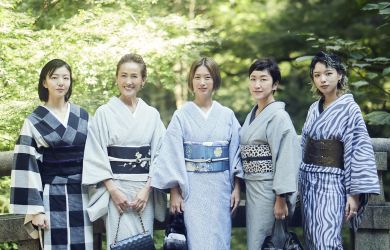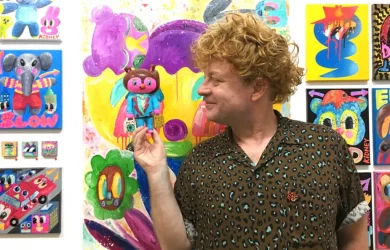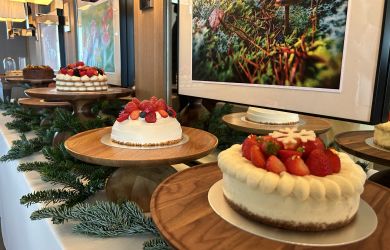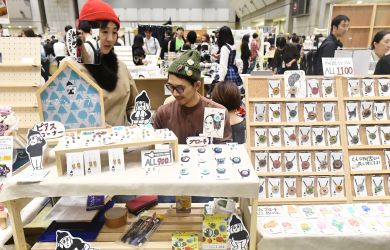
Originally published on metropolis.co.jp on November 2013

In the history of Japanese art, no family plays a bigger role than the Kano family and the school of art that bears their name. Founded by Masanobu Kano (1434-1530), who became the official painter of the Muromachi feudal government, the school spanned four centuries and monopolized most of the top patronage in Japan during that period. Like any successful family business, they also set up the occasional branch office, most notably in Edo, when it became the capital of the country in the early 17th century.
This medium-sized exhibition at the Idemitsu Museum of Art focuses on the work produced by this Edo branch, with a range of works that include paintings on hanging scrolls and folding screens, as well as sketchbooks, ceramics, and other works.
The Kano School painters were essentially kan-ga (Chinese painting) style painters, who looked to the Chinese ink painters of the Song, Yuan, and Ming periods as their models. This means that many of their early works, like the impressive folding screen Birds and Flowers of the Four Seasons (16th century) by Masanobu Kano are actually monochrome, a fascinating fact when you consider how integral color usually is in the depiction of nature.
The first part of the show focuses on the daring innovations of Kano Tan’yu (1602-1674), who left large empty spaces on his screen paintings, which gave his images a kind of floating quality. One of the attractions of these works would have been the large exposed areas of fresh, clear paper, but now, after several hundreds of years, the paper has discolored and looks rather drab.
Luckily, this was not the direction that the Kano School headed in. Keen to maintain their dominance of the art market, and to suit the increasingly garish tastes of the new Edo aristocracy, they went in for more decorative works, most notably applying gold leaf to the folding screens before painting on them.
This created a surface on which the paint—freed from the over-absorbent qualities of the paper—became more dynamic and expressive. This encouraged artists to make more adventurous brush strokes, such as those depicting the trees in Kano Naonobu’s Papa Birds and Monkeys (17th century).
But gold-leaf covered panels did not just change the feel of the brush and provide a decorative background that aged well. In the hands of a skilful artist it could also be used to create interesting contrast and tonal effects that could shine through the paint.
A perfect example is on display in Kano Tsunenobu’s Waves and Waterfowls (17th-18th century), which shows rocks surrounded by spiraling waves. In some parts of the rock the gold is only thinly painted over, allowing it to partially shine through creating varied light and texture that energizes the rocks.
Exquisite works like this hardly seem the product of mere human labor. Instead they seem to have sprung into being fully formed by some miracle of creation. But another interesting point of the exhibition is that it includes studies, practice sketches and painting plans, revealing just how much homework lay behind some of these images. That may have been the real gold.





